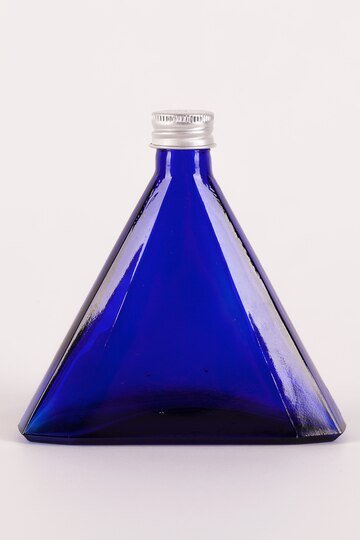Table of Contents
Introduction
When you think of iconic images of science, a few items probably come to mind: the microscope, the double helix of DNA, the periodic table, and the conical flask. This simple piece of glassware, often seen gracing the shelves of laboratories in movies and TV shows, holds a pivotal role in scientific research and discovery. Let’s delve into the fascinating world of the conical flask, also known as the Erlenmeyer flask, and explore its history, design, uses, and impact on science.
A Brief History
The conical flask owes its design and name to the German chemist Emil Erlenmeyer, who developed it in 1860. Erlenmeyer was a pioneer in organic chemistry and was driven by a desire to create a piece of laboratory equipment that would be versatile, practical, and efficient. His creation was a conical-shaped flask with a flat bottom and a cylindrical neck, a design that has remained largely unchanged for over 160 years.
Design and Features

The conical flask is distinguished by its unique shape: a wide, flat base that tapers upward to a narrow neck. This design is not merely for aesthetic purposes; it offers several practical advantages:
1. Stability: The wide base provides excellent stability, reducing the risk of tipping over and spilling contents.
2. Ease of Mixing: The conical shape allows for easy swirling and mixing of solutions without the risk of spillage, making it ideal for titrations and other procedures that require thorough mixing.
3. Controlled Evaporation: The narrow neck minimizes evaporation, helping to maintain the concentration of solutions over time.
4. Versatility: Conical flasks come in various sizes, typically ranging from 25 mL to 2000 mL, allowing for flexibility in different types of experiments.
Applications in Science
The conical flask is a staple in many scientific disciplines. Here are some of its most common uses:
Chemistry
In chemistry labs, conical flasks are used for mixing chemicals, conducting titrations, and preparing solutions. Their shape is particularly useful for handling volatile substances safely. The narrow neck can be easily sealed with a stopper, reducing the risk of contamination and exposure to hazardous fumes.
Biology
Biologists often use conical flasks for culturing microorganisms. The shape allows for easy aeration, which is crucial for the growth of aerobic organisms. When placed on a shaker, the design of the flask ensures that cultures receive uniform agitation, promoting even growth.
Environmental Science
In environmental science, these flasks are used to collect and analyze water and soil samples. Their durability and ease of use make them ideal for fieldwork. Researchers can transport samples back to the lab without worrying about spillage or contamination.
Education
In classrooms around the world, the conical flask is a symbol of scientific inquiry. Its simplicity and practicality make it an ideal tool for teaching basic laboratory techniques to students of all ages.
Innovations and Advancements
While the basic design of this flask has remained unchanged since its invention, advancements in materials and manufacturing techniques have enhanced its functionality. Modern flasks are often made from borosilicate glass, which is highly resistant to thermal shock and chemical corrosion. This allows scientists to use the flasks for a wider range of applications, including high-temperature experiments and the handling of aggressive chemicals.
Some conical flasks now come with additional features such as graduations for measuring volumes, screw caps for better sealing, and side arms for vacuum filtration. These innovations have expanded the versatility of this flask, making it an even more indispensable tool in the laboratory.
The Role in Scientific Discovery
The conical flask has been instrumental in numerous scientific breakthroughs. For example, the discovery of penicillin by Alexander Fleming in 1928 involved the use of conical flasks to culture bacteria and fungi. The development of modern antibiotics, which has saved countless lives, relied heavily on the use of these flasks for the production and testing of these life-saving drugs.
In the field of biochemistry, the elucidation of the structure of DNA by James Watson and Francis Crick was supported by experiments that used conical flasks for the preparation of DNA samples. These experiments were crucial in demonstrating the double-helix structure, which revolutionized our understanding of genetics.
Environmental Impact and Sustainability
As with any laboratory equipment, the production and disposal of this flasks have environmental implications. Traditional glass flasks require significant energy to produce and can contribute to waste if not properly recycled. However, the durability and reusability of glass conical flasks make them a more sustainable option compared to single-use plastic alternatives.
To mitigate environmental impact, many laboratories are adopting green chemistry principles, which emphasize the use of sustainable practices and materials. This includes the careful management of laboratory glassware to extend its lifespan and the implementation of recycling programs to ensure that glass waste is properly processed.
The Conical Flask in Popular Culture
Beyond its scientific significance, the conical flask has also permeated popular culture. It often appears in movies, TV shows, and even cartoons as a symbol of science and experimentation. Its distinctive shape makes it easily recognizable, and it is frequently used as a visual shorthand for laboratory work and scientific inquiry.
For instance, in the world of television, this flask is a staple in shows like “Breaking Bad,” where it symbolizes the meticulous and precise nature of chemical synthesis. In animated series like “Dexter’s Laboratory,” this flask represents the curiosity and creativity inherent in scientific exploration.
Conclusion
The conical flask, with its timeless design and unparalleled functionality, is truly an unsung hero of scientific discovery. From its origins in the hands of Emil Erlenmeyer to its widespread use in modern laboratories, this humble piece of glassware has played a crucial role in advancing our understanding of the natural world.
As we look to the future, the conical flask will undoubtedly continue to be a vital tool in the pursuit of knowledge. Whether it’s used in groundbreaking research, educational settings, or environmental studies, the conical flask remains a symbol of scientific endeavor and a testament to the enduring importance of practical, well-designed laboratory equipment.
So next time you see a conical flask, take a moment to appreciate its contribution to science. It’s more than just a piece of glass; it’s a vessel of discovery, a tool of innovation, and a symbol of the relentless human quest for understanding.
